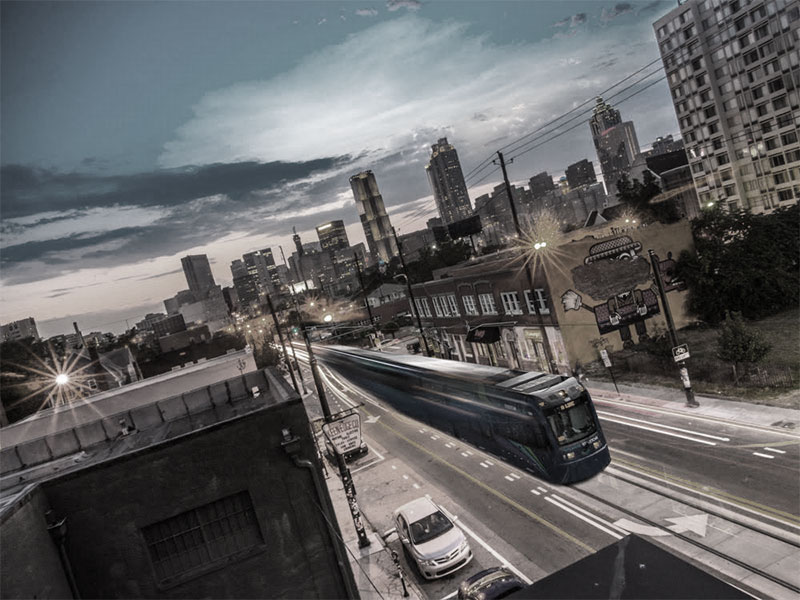By Douglass Sims, Natural Resources Defense Council
When our country was first being built, our vision of infrastructure was one of potentially unlimited expansion and opportunity. Communities and citizens would be linked and supported in ways that fostered growth and prosperity for generations to come.
We continue to think of infrastructure projects in this way, but we have a lot more information now about how practices of the past have contributed to air and water pollution, and divisions within our cities and communities.
Why do real estate and infrastructure projects that sound good on paper end up reinforcing old patterns of poor health outcomes, racial disparity, and environmental degradation?
These are the questions we’re asking at EcoDistricts Summit 2017, and after some three years of research and work, we think we’ve got some answers about how to do infrastructure better.
How It Started
In 2014, the Ford Foundation commissioned NRDC to lead a cross-disciplinary research team to explore options and opportunities for generating more and better infrastructure investments to build 21st-century communities. Our work included extensive discussions with several cities and counties, including a close engagement with municipal agencies in Denver and Los Angeles, and collaboration with national and international stakeholders through the Obama White House’s Build America Initiative and the Clinton Global Initiative America Infrastructure Working Group. Our investigation led us to a new vision for infrastructure investment and to an understanding of specific processes needed to ensure the principles work in reality. Our work has led to a series of papers and a newly completed video explaining the concept of what we call High Road Infrastructure.
It’s a philosophy, bolstered by concrete principles and implementation plans, that aligns with the increasing belief across a wide range of public, private, and philanthropic stakeholders that infrastructure projects should deliver multiple public benefits, including improved environmental and social performance.
It’s part of our overall foundational work on sustainable communities that also includes our partnership in the Strong Prosperous and Resilient Communities Challenge (SPARCC), a three-year, $90 million initiative to amplify efforts in six urban areas to ensure that new capital investments lead to equitable, healthy opportunities for everyone.
SPARCC Works on the Ground
We’re sharing in our EcoDistricts Summit session how SPARCC is approaching this work and how communities can work with investors and development teams to utilize investment screens that ensure the outcomes of real estate and infrastructure projects align with the community vision and economic and technical realities.
The SPARCC localities include Atlanta, home of the Ecodistricts Summit, and an interesting case study. The city’s public transportation system has helped the city in numerous ways but also has contributed to a stark racial divide by limiting those in low-income areas from accessing better jobs, housing and schools. A “New Atlanta Way,” utilizing SPARCC funding and resources, is predicted to increase opportunity and resources for low-income residents around MARTA transit stations while mitigating for displacement as a result of gentrification. (Other SPARCC areas include Chicago, Denver, Los Angeles, Memphis and the San Francisco Bay area.)
The Long Game
As we state in a forthcoming paper, the High Road Infrastructure Handbook, we believe that the United States can no longer treat infrastructure like an ongoing crisis, but must approach needed major investments as an opportunity for change in regions, cities and communities.
This holistic approach supports projects expected to deliver multiple benefits in a concept that is a potential national rallying point as jurisdictions confront harsher climate change effects, shifting demographics, and trends toward greener transportation, as well as the increasing popularity of urban lifestyles.
High Road infrastructure is also about recognizing and overcoming the typical mindset associated with infrastructure project design and delivery. Such an approach focuses on getting the best “value” for the least amount of money, where value is defined only as minimizing short term costs. Ironically, that approach often eliminates things like living-wage jobs for local residents, built-in mobility improvements and climate resiliency that will deliver the best long term value for communities.
Do you buy an appliance just because it’s the cheapest? Don’t you take into consideration how well it performs, whether it has multiple uses, where it was manufactured, who benefits, and its long-term costs? Similar criteria need to be considered for spending on infrastructure.
Failing to take the high road in creating our built environment – the very structures that undergird a thriving society – leaves us languishing in the face of the increasing challenges of our time.
Note: In addition to Doug Sims of NRDC, also on the EcoDistricts Summit panel is Caroline Wagner, Program Director, Enterprise Community Partners – a SPARCC partner along with NRDC, the Federal Reserve Bank of San Francisco and the Low Income Investment Fund, with funding support from the Ford Foundation, The JPB Foundation, The Kresge Foundation, the Robert Wood Johnson Foundation and The California Endowment.
Other NRDC blogs of related interest:
SPARCC: Igniting Sustainable, Equitable Community Development
Imagine Fixing Our Crumbling Infrastructure in Ways That Last. It Can Be Done.
Equitable Investment for People and the Planet
Questioning Assumptions about Low-Income Americans
Infrastructure is an Environmental Issue
Waiting for the Next Infrastructure Failure is Keeping Our Mayors Up at Night


One thought on “Some Hard Truths About Infrastructure”